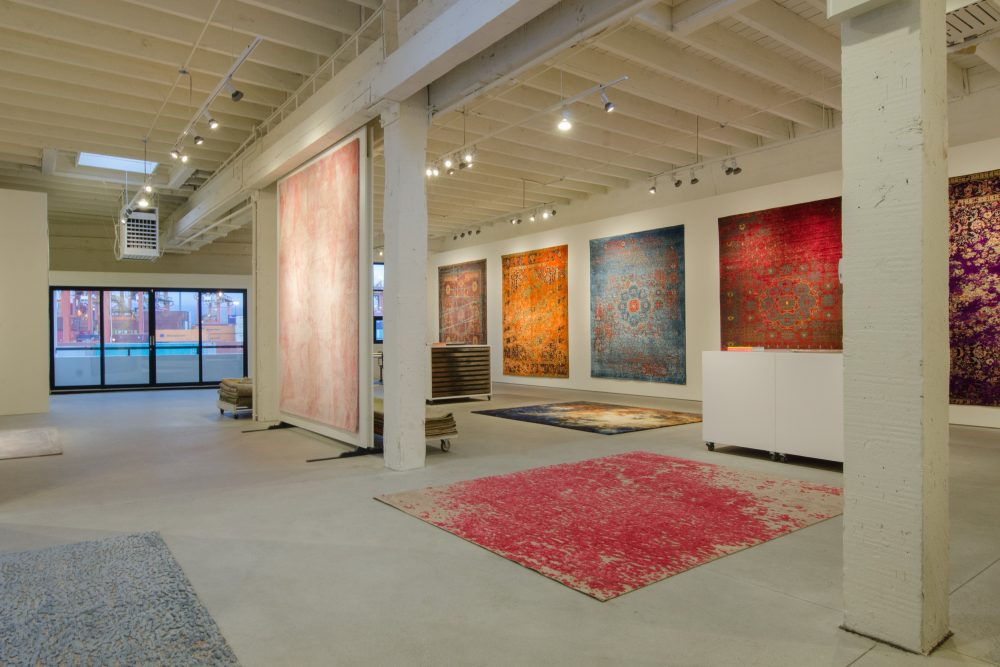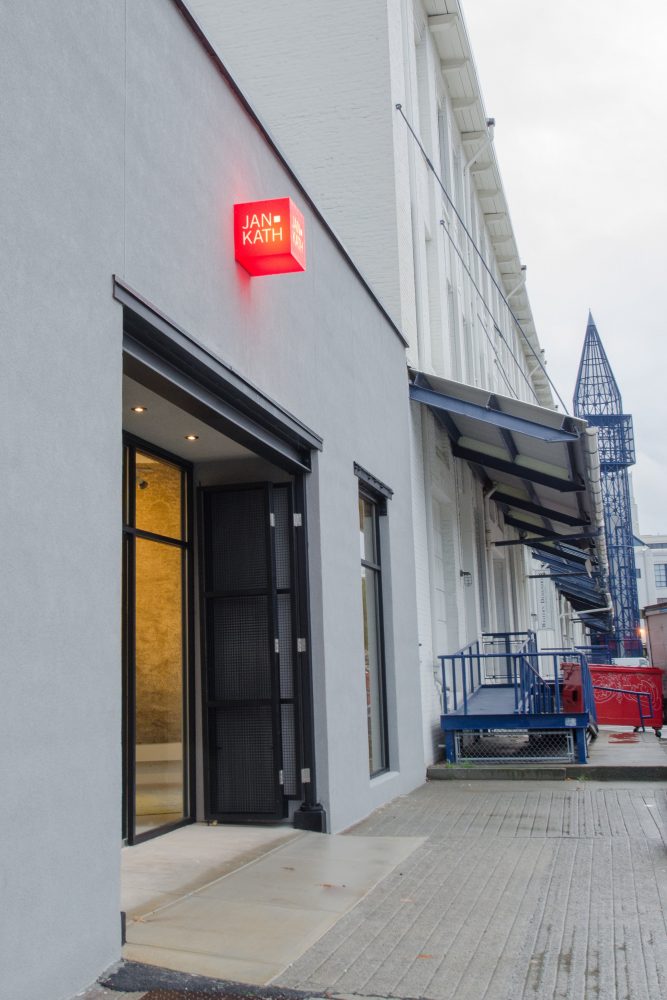It was Johannes Brahms who said that “for without craftsmanship, inspiration is a mere reed shaken in the wind or sounding brass or tinkling cymbals.” For German rug designer Jan Kath, craftsmanship is integral to his design process.
Kath is a true visionary. His pieces are composed using ancient, slow-making, hand-knotted techniques, generating elaborate and intricate textiles that evoke a contemporary palette so striking it feels as if they are more suited to a wall than the floor.
The Jan Kath design headquarters are in Bochum, Germany, but his work can also be found at flagships across Europe, and distributed globally in 54 countries. His creations are as dynamic as they are complex. Some mirror traditional Persian rugs and patterns; others are a watercolour canvas of clouds and sky. However, they are all are eclectic works of art, adorning the spaces of collectors, celebrities, designers, and luxury brands including Louis Vuitton and Tiffany & Co. In 2014, Kath partnered with long-time friend Jenni Finlay to open a stunning showroom in Vancouver’s Railtown district.
Raised, or has he puts it, “made” in the industrial Ruhr area of Northern Germany, Kath was born into a long line of antique carpet suppliers. He ran away from the family business at first; but after spending his early twenties travelling through India and its neighbouring countries, he unexpectedly found himself repeating history. “I started running out of money, and it was then that I ended up in Kathmandu in Nepal and ran into a German guy—a supplier of my dad’s,” Kath says via Skype from Germany. “He was running a factory in Kathmandu, a small place doing traditional and some contemporary carpets for the European market. I knew him from my parents’ business in Europe, and he offered me an espresso, which was a luxury in Nepal in those days.”
Kath recalls the man complaining about having to travel all the time, and how hot it was in Nepal. “So I saw my chance,” he says. “I asked him to hire me for a couple of months for a couple hundred dollars, and I would stay for him in Kathmandu and do his work.” The man agreed, and introduced Kath to the production side of the business. After working in Nepal under his German superior for a handful of years, Kath took over the factory. “Honestly speaking, when I started my business I was [essentially] bankrupt,” he admits. “It must be said that I am not a [university]-educated designer. I only became a designer by force.”
The ethos behind Kath’s creations is simple: craftsmanship and preservation. His vision is to conserve ancient techniques through deliberate movement, unfettered by the modern-day mass-production mindset. “The only way of preserving traditional technologies is by injecting contemporary ideas. And when I say, ‘injecting contemporary ideas,’ do not nail this down to one pin-point only,” he explains. “You can see that I am playing with different chapters and stories, and each and every collection comes with its own story behind it. But the story is not made up, it’s entirely true.”
It was his business travel through Nepal, Mongolia, and Siberia that shaped many of those stories, inspiring some of Kath’s most sought-after collections. “I was travelling on the Eurasian Express, which is one of the oldest and longest train tracks in the world that connects Western Europe with the Far East. It takes 10 days on the train, non-stop,” Kath recounts. “Stopping in Siberia, buying bread and vodka at the train stations, inspired me.” It was the basis for From Russia With Love, a collection of colourful and lush floral pieces.
The carpets are loomed in Nepal, India, Morocco, Turkey, and Thailand. The production is tedious, but it accurately echoes Kath’s gravitation towards items made with pure ingenuity. It takes anywhere from three to four months to complete an apartment-sized eight-by-10-foot rug, crafted by 10 to 12 workers, with one-half working on the product and the other sourcing the raw materials.
“It’s up to us, and also up to the people who like us, to explain to the audience what the process is—that we are working with real people and we cannot just push a button and a product is copied,” Kath insists. “We are securing the workforce for our future, to explain to the young people in Nepal and India that they are safe with us.”
More Design awaits.











